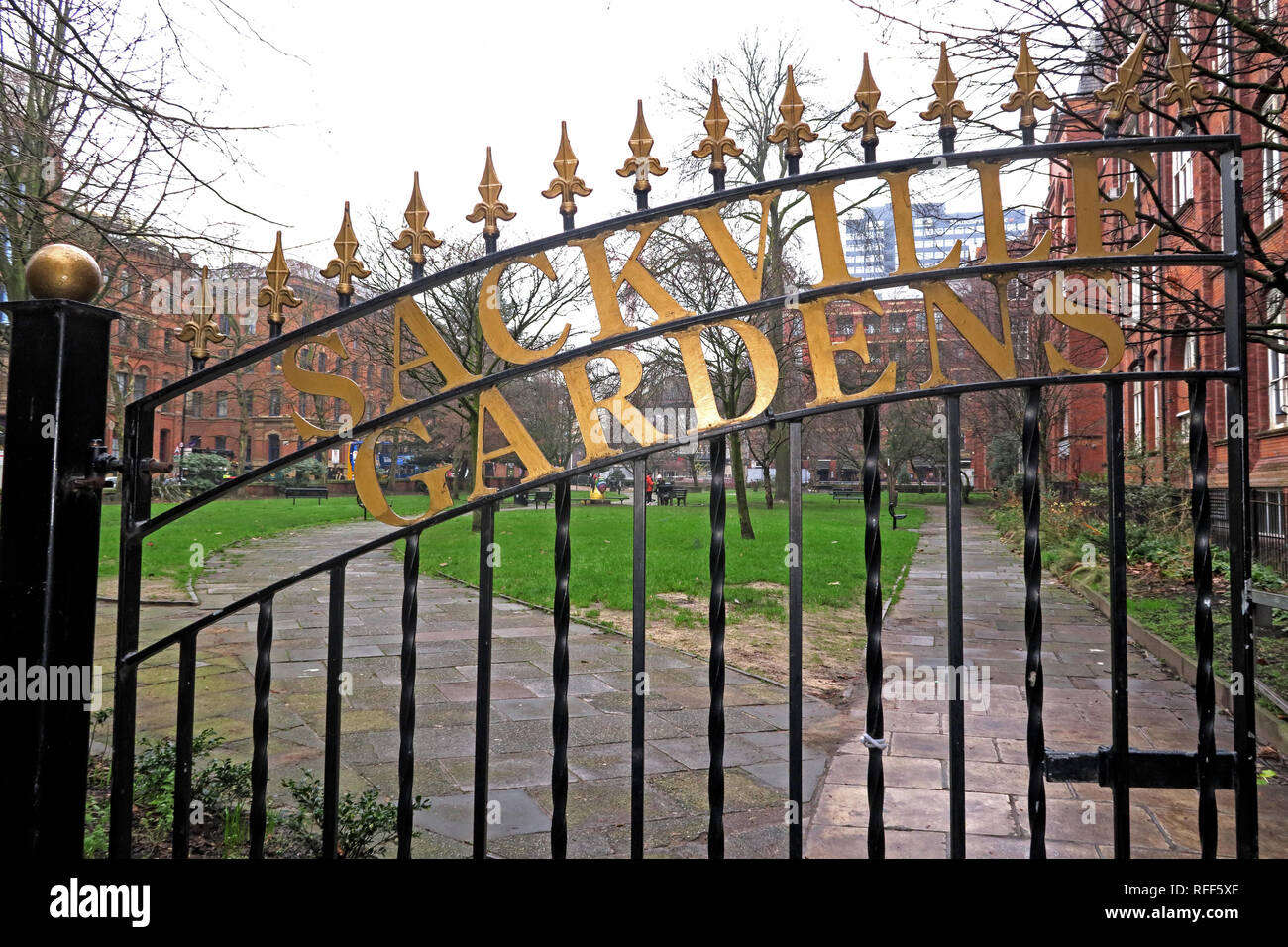Sackville Gardens gates, Whitworth St / Sackville St, Manchester, England, UK, M1 3WA

Image details
Contributor:
Tony Smith / Alamy Stock PhotoImage ID:
RFF5XFFile size:
57.1 MB (3.4 MB Compressed download)Releases:
Model - no | Property - noDo I need a release?Dimensions:
5472 x 3648 px | 46.3 x 30.9 cm | 18.2 x 12.2 inches | 300dpiDate taken:
11 January 2019Location:
Whitworth St / Sackville St, Manchester, England, UK, M1 3WAMore information:
The park contains the Alan Turing memorial statue, which depicts the "father of modern computing" sitting on a bench at a central position in the park. The park was chosen because, "It's got the university science buildings ... on one side and its got all the gay bars on the other side, where apparently he spent most of his evenings" The statue was unveiled on 23 June, Turing's birthday, in 2001. It was conceived by Richard Humphry, a barrister from Stockport, who set up the Alan Turing Memorial Fund in order to raise the necessary funds. Humphry had come up with the idea of a statue after seeing Hugh Whitemore's play Breaking the Code starring the actor Sir Derek Jacobi, and Jacobi became the patron of the fund. Glyn Hughes, an industrial sculptor from Adlington near Westhoughton, was commissioned to sculpt the statue. The Fund eventually raised around £15, 000, which was far short of the £50, 000 needed to have the statue cast in Britain. No major computer company donated to the fund, which was, according to the sculptor, because Turing was not American. The statue was cast in China. Turing is shown holding an apple—a symbol classically used to represent forbidden love, as well as being the fruit of the tree of knowledge, the object that inspired Isaac Newton's theory of gravitation, and the means of Turing's own death. The cast bronze bench carries in relief the text 'Alan Mathison Turing 1912-1954', and the motto 'Founder of Computer Science' as it would appear if encoded by an Enigma machine: 'IEKYF ROMSI ADXUO KVKZC GUBJ'. A plinth at the statue's feet says 'Father of computer science, mathematician, logician, wartime codebreaker, victim of prejudice'. There is also a Bertrand Russell quotation saying 'Mathematics, rightly viewed, possesses not only truth, but supreme beauty—a beauty cold and austere, like that of sculpture.' The sculptor buried his old Amstrad computer, which was an early popular home computer, under the plinth.